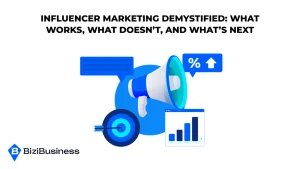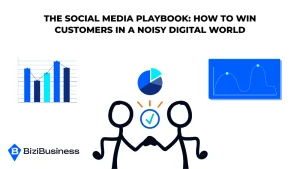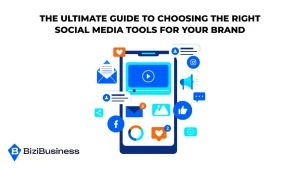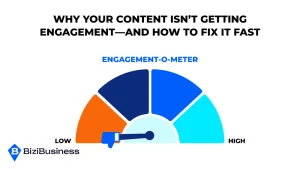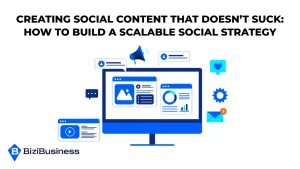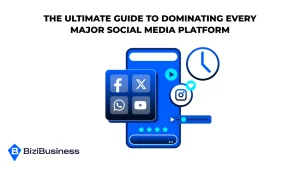BiziTopics
Why Email Marketing Still Crushes (And How to Do It Right)
BiziBusiness
Aug 21, 2025
9 min read
Email marketing continues to outperform flashier channels, delivering higher returns, stronger engagement, and more predictable revenue than most brands realize.
Even in 2025, when AI, social algorithms, and ad platforms dominate conversations. Email remains one of the most effective tools in your marketing stack. It cuts through distractions, lands directly in your audience’s hands, and drives action when used strategically.
Still, many businesses overlook email or assume it’s outdated. That misconception costs them leads, loyalty, and sales.
BiziBusiness is here to change that.
You’ll learn:
- Why email consistently beats other channels on ROI and reach
- Where most email strategies fall flat—and how to avoid those traps
- The proven framework for building, nurturing, and converting your email list
- What’s working right now in high-performing email campaigns
If you want to turn your list into a true growth engine, keep reading. This is how email marketing actually wins today.
Email Is Still King (And Here’s the Proof)
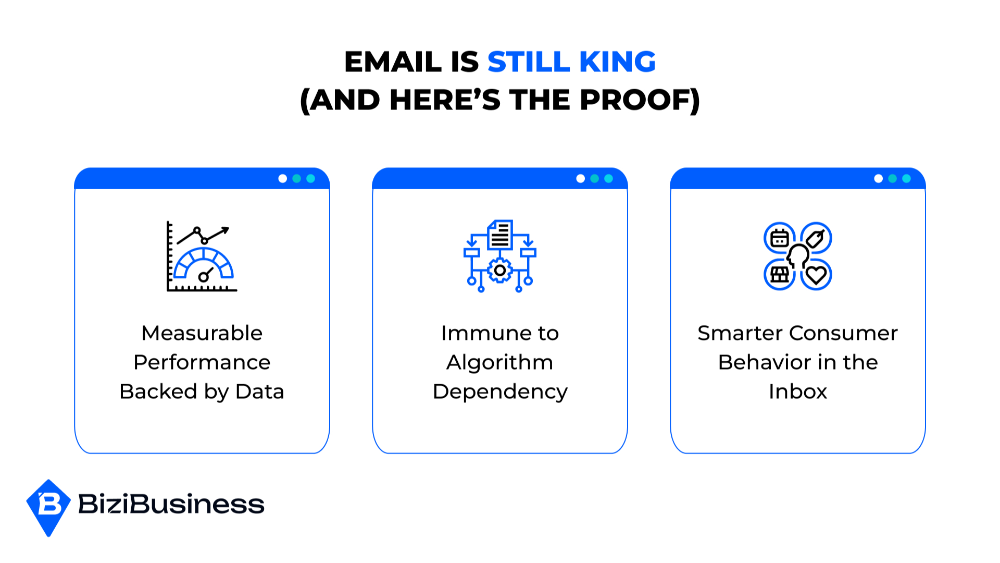
Despite the constant influx of new marketing platforms, email continues to outperform them in both cost efficiency and conversion results. Industry data shows that email marketing delivers an average return of $36 to $45 for every $1 spent, making it more effective than paid search, display ads, or organic social media.
Email doesn’t just save money. It drives meaningful action. While social platforms limit visibility through algorithmic changes and rising ad costs, email allows you to communicate directly with your audience in a controlled environment.
Measurable Performance Backed by Data
- Top-performing industries see average open rates around 34 percent.
- Click-through rates are often double those seen on social media campaigns.
- Segmented campaigns generate up to 760 percent more revenue than unsegmented ones, largely due to improved personalization and timing.
This performance isn’t theoretical. It’s measurable and repeatable across industries when email is executed correctly.
Immune to Algorithm Dependency
Unlike social and paid platforms that are heavily dependent on ever-changing algorithms, email is a direct asset you control. There are no third-party intermediaries filtering your message. If a platform changes its algorithm or terms, your email list remains unaffected.
That makes email one of the few reliable channels in a landscape defined by instability and platform dependency.
Smarter Consumer Behavior in the Inbox
Email readers today are selective, but also more attentive. Users quickly unsubscribe from irrelevant content, but they actively engage with emails that are timely, relevant, and personalized. The inbox is now treated more like a curated information space, which rewards marketers who understand user behavior and deliver real value.
In short, email isn’t just holding its ground. It remains one of the most powerful and resilient tools in digital marketing.
The Biggest Mistakes People Make With Email Marketing

Email marketing has a reputation for being low-cost and high-impact. But when executed poorly, it can just as easily become a source of lost trust, low engagement, and missed revenue. Many businesses fail to see results because they fall into avoidable traps that undermine their strategy from the start.
Sending Generic, Untargeted Campaigns
One of the most common mistakes is the “spray-and-pray” approach: sending the same message to everyone on your list without segmentation. This ignores user behavior, interest, and intent, leading to poor engagement rates and higher unsubscribe numbers. Without targeting, even the best-written content is unlikely to convert.
Relying on Purchased Lists or Irrelevant Outreach
Buying email lists or sending campaigns to people who never opted in not only damages your brand reputation but can also violate data privacy laws. These contacts are unlikely to convert and often mark messages as spam, which hurts deliverability for your entire domain.
Even with a legitimate list, sending irrelevant or overly frequent offers can lead to disengagement. A relevant message sent less often will perform far better than frequent, unfocused emails.
Overlooking Deliverability and Technical Setup
Many marketers skip foundational setup steps like configuring SPF, DKIM, and DMARC records. These settings authenticate your domain and help prevent your emails from being flagged as spam. Ignoring these can cause even legitimate campaigns to end up in the junk folder.
Monitoring bounce rates, spam complaints, and sender reputation should be an ongoing part of your strategy, not an afterthought.
Failing to Design for Mobile and Accessibility
Over half of all email opens now happen on mobile devices. If your layout doesn’t render properly on smaller screens, you lose the majority of your audience. Poor font choices, broken formatting, or unclear calls-to-action make it harder for users to engage with your content.
Accessibility also matters. Emails should be legible, structured for screen readers, and easy to navigate. If the experience is difficult or inconsistent, people won’t engage, regardless of the content.
By avoiding these common missteps, your email marketing becomes not only more effective but also more sustainable over the long term.
What Actually Works in Email Today
While email marketing has matured, the strategies that drive real performance have become more refined. Success today isn’t about volume, it’s about precision. The best-performing campaigns focus on relevance, timing, and user experience.

Segmentation and Personalization
Generic email blasts no longer cut it. Effective campaigns are built on segmentation. Organizing your list by demographics, behavior, purchase history, or engagement levels. This allows you to tailor messages to what each segment cares about most.
Personalization goes beyond inserting a first name. It includes recommending relevant content or products, aligning offers with previous actions, and even adjusting send times based on past behavior. This level of customization increases open and click rates, and ultimately improves conversions.
Behavioral Automation
Triggered email flows based on user behavior have become essential for scalable, effective campaigns. Whether it’s a welcome sequence for new subscribers, a cart abandonment reminder, or a post-purchase follow-up, automation ensures timely and relevant communication without manual effort.
Lifecycle emails, based on where a user is in the customer journey, help build relationships over time. These emails guide users from awareness to conversion by delivering the right message at the right moment.
Strong Calls to Action and Concise Copy
Every email should be designed with one clear goal. That means writing copy that’s direct, benefit-driven, and easy to scan. Attention spans are short, especially on mobile. Your call to action (CTA) must be visible, specific, and focused on a single next step.
Avoid cluttering your message with too many links or conflicting objectives. A clear structure and singular focus will outperform emails that try to do too much.
High-Converting Lead Magnets
The strength of your email marketing starts with how people join your list. Effective lead magnets offer immediate value and are aligned with your core offer. Examples include checklists, templates, gated content, free tools, or exclusive discounts,… provided they solve a real problem your audience faces.
The right incentive will attract engaged subscribers who are more likely to convert over time.
Optimized Email Design
Email design plays a critical role in engagement. Clean, mobile-responsive layouts with clear hierarchy, contrasting buttons, and minimal distractions improve both readability and click-through rates. Using alt text, proper heading structure, and readable font sizes also ensures accessibility across devices.
Emails should load quickly, look good across platforms, and match the tone and branding of your website and other channels. A professional, consistent visual identity increases trust and reinforces your brand authority.
These strategies are not just best practices. They are now baseline expectations for any business that wants to see meaningful results from email marketing.
Explore the Full Email Marketing Ecosystem
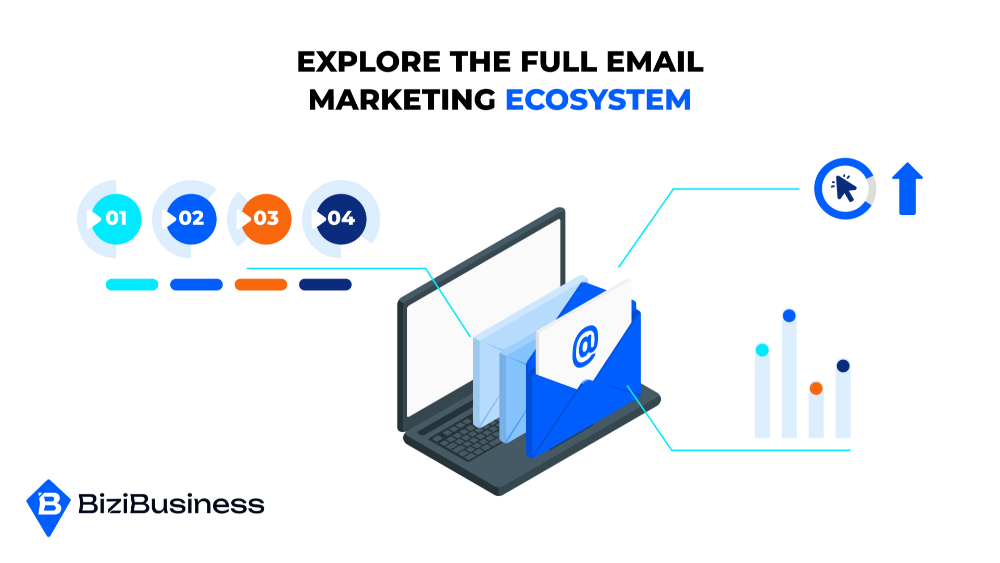
Email marketing success doesn’t happen in isolation. It requires alignment between strategy, execution, and analysis. To support your next steps, we’ve created a full library of expert guides that cover every critical area of email marketing.
Each of these topics is designed to help you go deeper, refine your tactics, and scale results:
- Strategy and Planning: Lay the foundation with audience targeting, goal setting, and campaign architecture.
- List Building: Learn ethical, effective methods to attract high-quality subscribers who want to hear from you.
- Segmentation: Discover how to structure your audience for better targeting, engagement, and conversion.
- Email Campaigns: Explore campaign types, timing, and messaging that drive results.
- Email Design: Create emails that look great, read well, and encourage action across all devices.
- Deliverability: Ensure your emails land in the inbox, not the spam folder, with proper technical setup and reputation management.
- Automation & Workflows: Set up lifecycle-based flows that nurture leads and retain customers with minimal manual input.
- Cross-Channel Integration: Align your email strategy with social, SMS, and web experiences for a unified brand presence.
- Tools and Platforms: Evaluate and select the right ESPs and tools that support your business goals.
- Analytics and Metrics: Track performance and translate data into actionable insights that improve future campaigns.
- Testing and Optimization: Use A/B testing and continuous refinement to increase open rates, click-throughs, and conversions.
Whether you’re building your first sequence or scaling an enterprise campaign system, these topics provide the depth and structure to take your email marketing further.
Why Email Still Crushes (When Done Right)
Email marketing continues to prove its long-term value, even in a digital landscape dominated by automation, social platforms, and search engines. It offers something other channels can’t: direct access to your audience, owned data, and measurable performance that scales with your business.
When done right, email becomes more than a communication tool. It becomes a growth engine. Building trust, nurturing relationships, and driving consistent revenue without the volatility of paid channels or the restrictions of third-party platforms.
If you’ve been treating email as an afterthought or relying on outdated tactics, now is the time to rethink your strategy. The fundamentals have changed. Success depends on relevance, precision, and a willingness to build smarter, not louder.
If you’re ready to get serious about results:
- Revisit your list-building and segmentation efforts.
- Tighten your messaging and campaign goals.
- Audit your automation flows and deliverability setup.
- Start testing consistently, not occasionally.
Email marketing still works. It just demands more intentionality than ever before.
The next step is yours.
Subscribe to Newsletter
Unlock your creativity and stay up to date on marketing tips
